Picking the right-sized replacement DE grids can be accomplished in one of three ways: using the filter model tag information, measuring your old grids, or using internal parts to backtrace your filter’s model. If you have any questions about your filter or an interesting way you tracked down replacements grids, leave a comment below.
Filter Model and Size
Your filter’s specifications tag should have all the information you need to find the right replacement grids. Your filter’s model tag is stamped with the filter’s make, model, and size. This information should give you enough breadcrumbs to lead you to the correct DE grids.
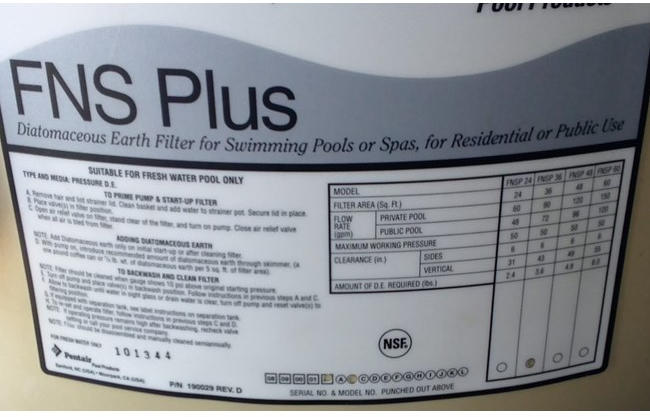
Take a look at this Pentair FNS Plus filter label. You can see the manufacturer’s name (Pentair), the model name (FNS plus), and can see the range of sizes for this series. In addition, you can see the FNSP36 line is hole-punched which identifies it as your specific filter’s size.
Most DE filter model numbers will list the grid square footage; try these as examples:
- The Hayward ProGrid 48 Sq Ft has a model number DE4820
- The Pentair FNS Plus, 60 Sq Ft, uses a model number variance of FNSP-60
Measure Your Old DE Grids
Measuring your old DE grids should give you the width and length to identifying the correct grid size.
Currently, most manufactured DE filters use the curved grid style. This standardization provides us a common size that we can use to find the replacement grids. The pool industry’s standard curved style DE grids come in five different sizes: 24, 36, 48, 60, and 72 square feet. Their respective lengths are 12, 18, 24, 30, and 36 inches.
A standard curved grid pack of eight includes seven full grids (11.5 inches) and a partial (9.5 inches). If you substitute just a few of these DE grids, measure the width to ensure you’re picking the correct size.
Older models, like the Jacuzzi Earthworks and Avalanche, use non-curved replacement DE grids. Be sure to measure all of your grids, as these models can use several grid sizes.
If model info is unreadable, use internal part numbers and grid size to identify.
Your filter’s information tag is exposed to the elements year-round will result in fading, which leads to it being unreadable. In these cases, how do we find the right DE grids? The filter’s internal parts hold the key to finding your filter model size. You should be able to recognize the manufacturer with that part number, and, with that, you can find your model using our Filter Parts Finder Guide. Your top manifold, grid base, tank shell, and air relief assembly are recommended to check for identifying numbers. This information, coupled with the grid size measurements we took above, should ID the grid you need
After you’ve found the right grids, check this video for a guide on installing them too.

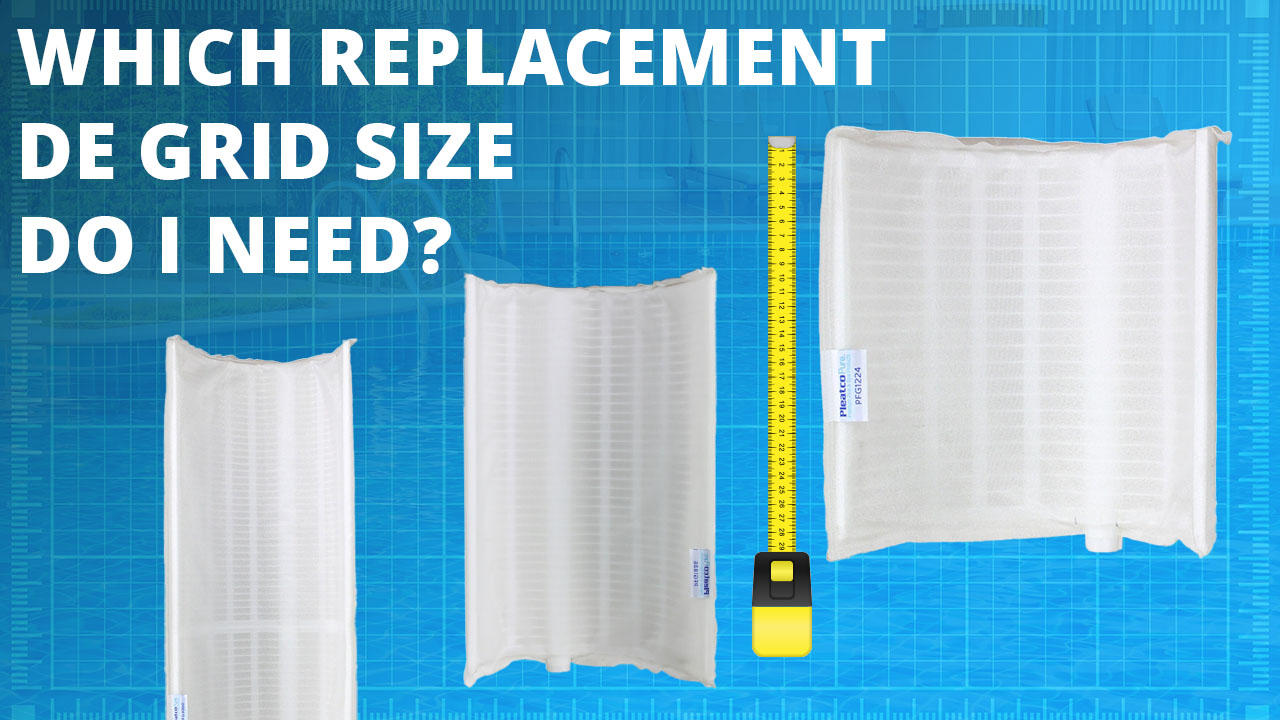







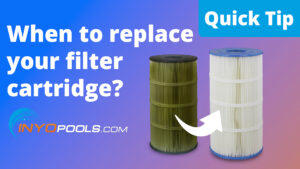
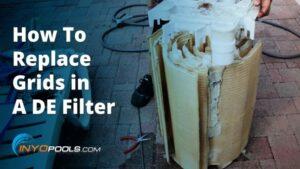
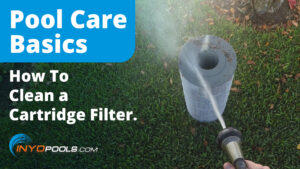

Leave a Reply